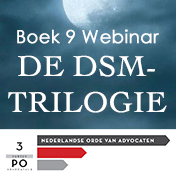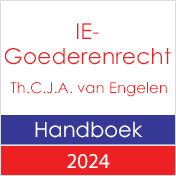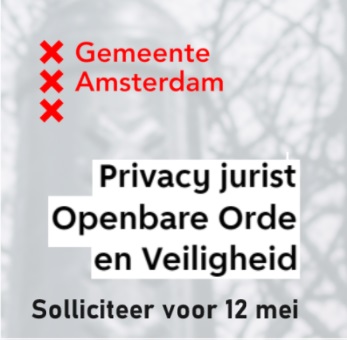 B9 11366. 1- Gerecht EU, 21 juni 2012, zaak T-276/09, Kavaklidere-Europe tegen OHIM / Yakult Honsha (Yakut).
B9 11366. 1- Gerecht EU, 21 juni 2012, zaak T-276/09, Kavaklidere-Europe tegen OHIM / Yakult Honsha (Yakut).
Merkenrecht. EU-oppositie o.g.v. het gemeenschapsbeeldmerk "Yakult" (het logo van het bekende drankje) tegen de inschrijving van het woordmerk "Yakut". De oppositie wordt toegewezen. De beeldelementen zijn van ondergeschikt belang, verwarringsgevaar is aannemelijk en het argument dat het merk Yakult alleen maar op de bekende specifieke flesjes wordt gebruikt en dat daarom verwarring niet aannemelijk is, wordt afgewezen.
46. As for the graphic element of the earlier figurative mark, the only element capable of being distinctive consists of shapes similar to brackets which merely surround the word element ‘yakult’. That element cannot be regarded as the dominant element in the overall impression produced by the sign Yakult. It is a sort of outline, in oval form, that is to say, a simple geometric form which will not evoke any particular concept for the average consumer.
(…) 58. The applicant’s argument concerning the alleged marketing of the goods covered by the earlier mark in transparent plastic bottles of a specific shape is wholly unfounded, given that it does not at all follow from the registration of that mark that the goods that are marketed can be marketed only in that way.
Lees het arrest hier.
 2- Gerecht EU, 13 juni 2012, Zaak T-277/11, Hotel Reservation Service Robert Ragge GmbH tegen OHIM / Promotora Imperial (iHotel).
2- Gerecht EU, 13 juni 2012, Zaak T-277/11, Hotel Reservation Service Robert Ragge GmbH tegen OHIM / Promotora Imperial (iHotel).
Merkenrecht. EU-oppositie o.g.v. gemeenschapswoordmerk "iHotel" tegen de inschrijving voor hotelreserveringen van het gemeenschapswoordmerk "iHotel". De oppositie wordt toegewezen:
96. Zum einen sind die mit der Anmeldemarke gekennzeichneten anderen Dienstleistungen als die „Erstellung von Programmen (Software) für eine Datenbank zur weltweiten Hotelzimmer-Reservierung“ den mit der älteren Marke gekennzeichneten Dienstleistungen ähnlich oder sogar mit diesen identisch. Zum anderen sind die einander gegenüberstehenden Zeichen „nahezu identisch“. (...) ist festzustellen, dass zwischen den einander gegenüberstehenden Marken Verwechslungsgefahr besteht.
Lees het arrest hier.  3- Gerecht EU, 21 juni 2012, zaak T-514/10, Fruit of the Loom tegen OHIM/ Blueshore Management (FRUIT).
3- Gerecht EU, 21 juni 2012, zaak T-514/10, Fruit of the Loom tegen OHIM/ Blueshore Management (FRUIT).
Merkenrecht. Nietigheidsactie tegen het Fruit of the Looms gemeenschapswoordmerk "FRUIT" voor kleding. Naar mening van het Gerecht is het gebruik van het element ‘Fruit’ als onderdeel van het merk ‘Fruit of the Loom’ onvoldoende om zelfstandige gebruik van het het merk FRUIT aan te nemen.
54. First, it must be observed that the applicant challenges only the analysis carried out by the Board of Appeal of the statements which the applicant provided in order to prove the use of the trade mark FRUIT or of the evidence relating to the website www.fruit.com. Thus, the applicant does not challenge the conclusions as to lack of genuine use drawn by the Board of Appeal from other evidence.
(…) 66. This arrangement is such that the headings relate to the trade mark FRUIT OF THE LOOM and not to the trade mark FRUIT. The internet site, therefore, is, at most, a means of marketing and advertising the products of the trade mark FRUIT OF THE LOOM. In any event it is not sufficient to prove genuine use of the trade mark FRUIT.
Lees het arrest hier. 4- Gerecht EU, 20 juni 2012, zaak T-357/10, Kraft Foods Schweiz tegen OHIM / Compañía Nacional de Chocolates (CORONA).
4- Gerecht EU, 20 juni 2012, zaak T-357/10, Kraft Foods Schweiz tegen OHIM / Compañía Nacional de Chocolates (CORONA).
Merkenrecht. EU-oppositie o.g.v. Ests, Lets en Litouws woordmerk KARUNA tegen de inschrijving van het gemeenschapsbeeldmerk CORONA (voor chocola). De oppositie wordt afgewezen. “chocolate is not ordered verbally”.
41 In the present case, the Board of Appeal found, in paragraph 22 of the contested decision, that, despite the identical nature of the goods at issue, the differences between the signs at issue are such as to prevent the relevant consumers from mistaking the commercial origin of those goods. Furthermore, the fact that chocolate is not ordered verbally, but merely selected from shop shelves by consumers, makes the visual aspect of those signs more relevant. In that regard, it should be pointed out that the level of attention of the relevant public to be taken into account for assessing the likelihood of confusion in relation to everyday consumption is neither particularly high nor particularly low (see paragraph 23 above).
Lees het arrest hier.


























































